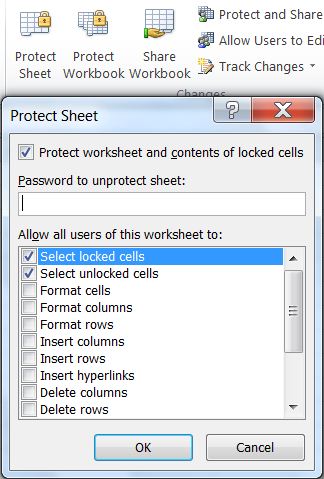Suppressor Paperwork: Legal Requirements and Steps

Acquiring a suppressor, also known as a silencer, in the United States is not a straightforward process due to the strict regulations surrounding these devices. This article will guide you through the legal requirements, the steps to obtain a suppressor, and offer practical advice to ensure you stay compliant with the law. Whether you're an avid shooter, a hunter, or just curious about firearms, understanding this process is crucial.
The Basics of Suppressors

Before diving into the paperwork, let’s clarify what a suppressor is:
- A suppressor is a device attached to the muzzle of a firearm to reduce the noise and recoil generated by firing.
- It works by trapping and slowing down the expanding gas from the barrel, reducing the sound.
- In the U.S., suppressors are classified as National Firearms Act (NFA) items, which means they’re subject to additional regulation beyond standard firearms.

Legal Requirements for Acquiring a Suppressor

To legally purchase a suppressor, you need to comply with both federal and state laws:
Federal Requirements:

- ATF Form 4: You must file Form 4 with the Bureau of Alcohol, Tobacco, Firearms, and Explosives (ATF) for a tax stamp. This form requires detailed personal information.
- $200 Tax Stamp: A one-time payment for each suppressor you purchase.
- Background Check: The purchase is subject to an extensive background check.
- Chief Law Enforcement Officer (CLEO) Signature: Although optional, some local gun stores might require this.
State Requirements:

- State-Specific Laws: Some states allow suppressors, while others have strict bans. Always check your state’s specific regulations.
- Transfer Requirements: Certain states require you to go through additional steps like state police involvement or further tax payments.

Steps to Legally Purchase a Suppressor

Here’s the detailed process:
1. Understand Your Eligibility:

- Ensure you’re a U.S. citizen or legal resident (Green Card holder) with no felony convictions, domestic violence misdemeanors, or illegal drug use issues.
2. Choose Your Suppressor:

- Select a model that suits your needs, considering factors like caliber, length, weight, and price.
- Visit a local firearms dealer or browse online to find what’s available.
3. Initiate the Purchase:

- Go to a Federal Firearms Licensee (FFL) dealer.
- Choose to purchase a suppressor; the dealer will guide you through the process.
4. Fill Out and Submit ATF Form 4:

- Complete Form 4 with your personal details.
- Attach a passport-style photo and fingerprints.
- Submit your application through the FFL dealer.
💡 Note: Be precise when filling out the form to avoid delays or rejection. Check your spelling and details twice!
5. Pay the Tax:

- Pay the $200 tax to the ATF. This is a one-time tax per suppressor.
6. Wait for Approval:

- Processing time can range from several months to over a year.
- Once approved, you’ll receive a tax stamp from the ATF.
7. Complete the Transfer:

- Pick up your suppressor from the FFL dealer.
- Complete any final paperwork or requirements.

Things to Consider

Here are a few additional considerations:
- Understand Your State’s Laws: Ensure your suppressor complies with all state-specific regulations.
- Engraving: Some manufacturers offer to engrave the suppressor for you, or you might have to do this yourself if you decide to make your own.
- Secure Storage: Keep your suppressor in a secure location to prevent theft or unauthorized access.
Obtaining a suppressor legally involves understanding federal and state regulations, completing the necessary paperwork, and following a well-defined process. Though the process can be time-consuming, having a suppressor can greatly enhance your shooting experience by reducing noise levels, making it more enjoyable and less harmful to your hearing. Remember to always stay updated with any changes in laws and ensure you're always in compliance. With patience and adherence to these steps, you can legally acquire a suppressor and enjoy its benefits safely and legally.
Can I buy a suppressor online?

+
Yes, you can, but you must still follow the federal and state regulations, including completing an ATF Form 4 and paying the 200 tax stamp.</p> </div> </div> <div class="faq-item"> <div class="faq-question"> <h3>What happens if I move to a state where suppressors are illegal?</h3> <span class="faq-toggle">+</span> </div> <div class="faq-answer"> <p>You must comply with the new state's laws. This often means you might need to transfer your suppressor back to a state where it's legal or sell it legally.</p> </div> </div> <div class="faq-item"> <div class="faq-question"> <h3>Do I need a permit or license to own a suppressor?</h3> <span class="faq-toggle">+</span> </div> <div class="faq-answer"> <p>The process of obtaining a suppressor acts as a form of licensing. You'll need to go through the NFA process, which includes a background check and tax payment, effectively granting you permission to own it.</p> </div> </div> <div class="faq-item"> <div class="faq-question"> <h3>Can I make my own suppressor?</h3> <span class="faq-toggle">+</span> </div> <div class="faq-answer"> <p>Yes, but you must register it with the ATF as an NFA item before you start manufacturing, which includes the same 200 tax stamp.



